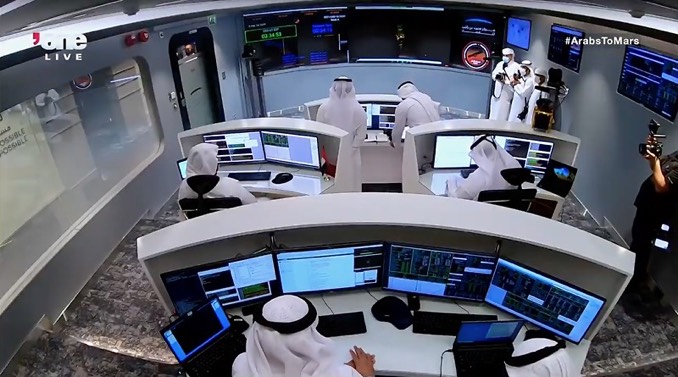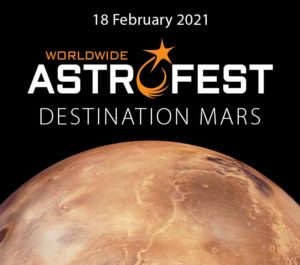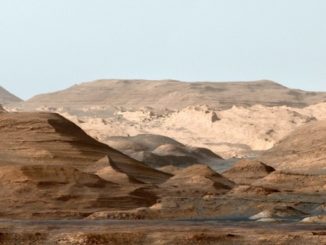
The United Arab Emirates Hope spacecraft braked into orbit around Mars on 9 February, firing its six primary thrusters for a nerve-wracking 27 minutes to slow down enough for capture by the red planet’s gravity. The Mars orbit insertion, or MOI, “burn” capped a seven-month voyage from Earth and marked an “enormous milestone” for the first planetary mission launched by an Arab nation.
“MOI was the most critical and dangerous part of our journey to Mars, exposing the Hope probe to stresses and pressures it has never before faced,” said Omran Sharaf, director of the Hope project at the Mohammed bin Rashid Space Centre.
“While we have spent six years designing, testing and retesting the system, there is no way to fully simulate the impacts of the deceleration and navigation required to achieve MOI autonomously. With this enormous milestone achieved, we are now preparing to transition to our science orbit and commence science data gathering.”
Hope is the first of three spacecraft arriving at Mars this month. China’s Tianwen-1 spacecraft, made up of an orbiter, a lander and a rover, was expected to arrive in Mars orbit on 10 February, followed by NASA’s Perseverance rover eight days later.
The $200 million Hope mission is a cooperative venture led by United Arab Emirates in partnership with the Laboratory for Atmospheric and Space Physics at the University of Colorado at Boulder, which built the spacecraft. Arizona State University and the University of California at Berkeley also are participating.
After instrument check out and calibration, the Hope spacecraft will be manoeuvred into its planned science orbit, measuring 12,400 by 26,700 miles, giving its three science instruments – a high-resolution camera and two spectrometers – a global view of the martian atmosphere around the clock, in daylight and darkness.
Over the course of at least one martian year, about 687 Earth days, the spacecraft will monitor weather systems in the red planet’s lower atmosphere, measure the escape of atmospheric oxygen and hydrogen into space and collect data on processes in the lower atmosphere that contribute to that escape.
But science is just one of the mission’s goals.
“One of our mission objectives was to stimulate a lot of students and the entire society within STEM,” said deputy project manager Sarah Al Amiri, UAE minister of state for advanced sciences and chair of the Mohammed Bin Rashid Space Center.
“We’ve seen a large shift with the mindset of students, first and foremost within the Emirates, but we’ve also seen a lot of keen engagement with the region … and that has triggered a lot of thoughts with regards to what is possible, and how to be able to use the talents of youth positively rather than using them towards destruction.”
Join us for an evening on Mars
 Astronomy Now’s AstroFest conference goes worldwide this year. Since 1992 amateur and professional astronomers have converged on London to hear about the latest discoveries in astronomy and space exploration. In 2021, the event is blasting off into cyberspace until we’re able to meet again in person.
Astronomy Now’s AstroFest conference goes worldwide this year. Since 1992 amateur and professional astronomers have converged on London to hear about the latest discoveries in astronomy and space exploration. In 2021, the event is blasting off into cyberspace until we’re able to meet again in person.
Our Worldwide AstroFest 2021 season of online presentations starts on 18 February when we invite you to join us for an evening on the Red Planet. You’ll hear from expert speakers and then watch live as NASA’s Perseverance rover lands at Jezero Crater to begin a new era of Mars exploration. This special event will be hosted by Stuart Clark and Lucie Green and attendees will get a chance to pose questions to the experts.



